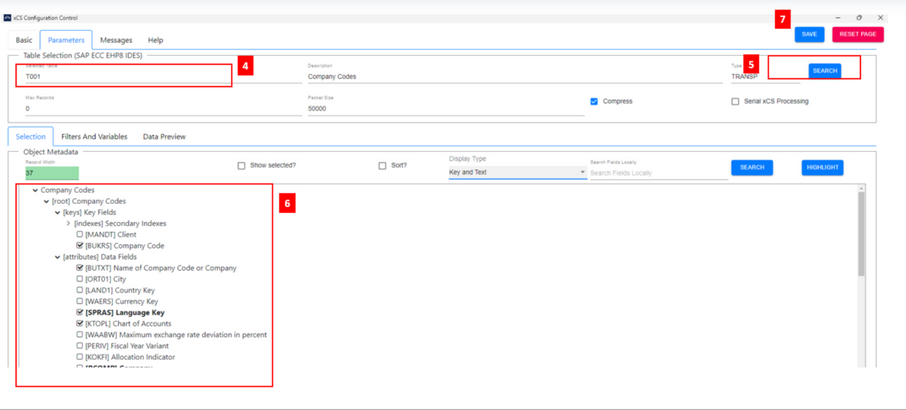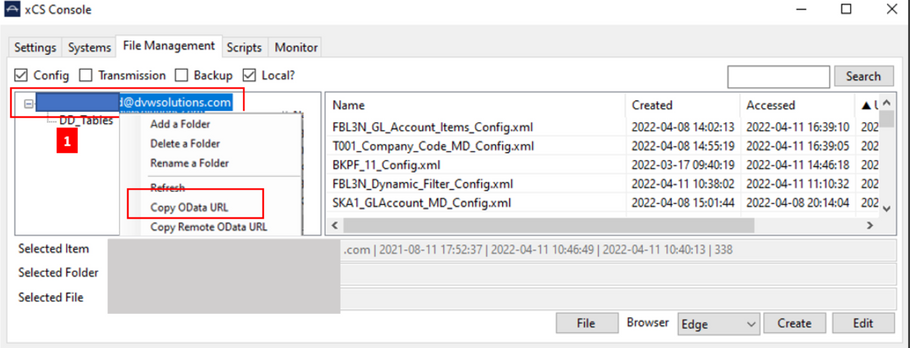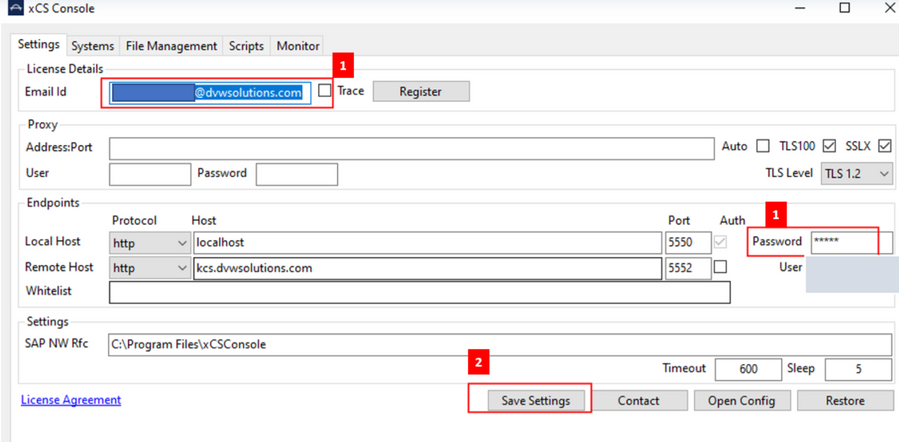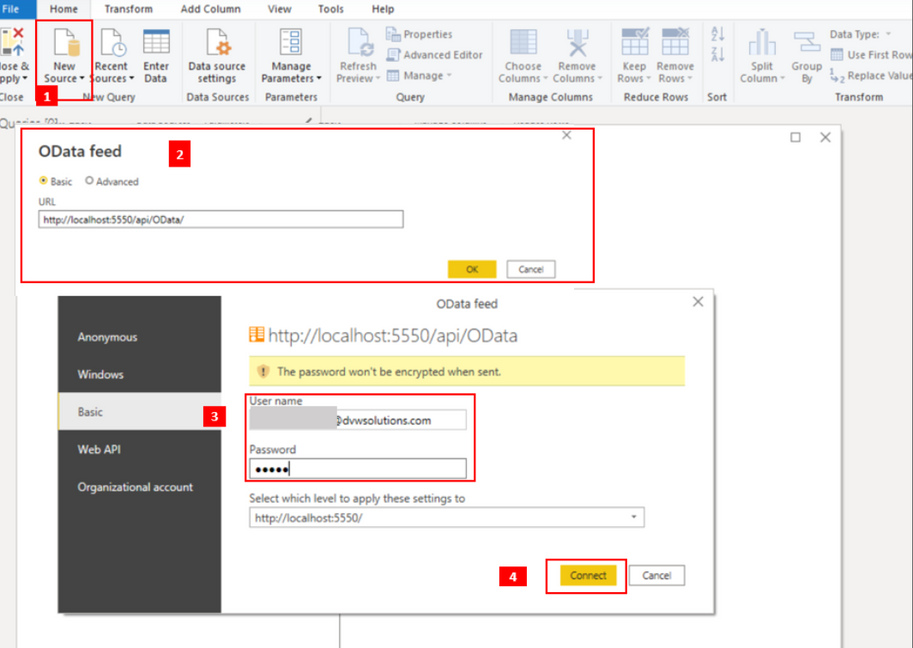Huge last-minute discounts for FabCon Vienna from September 15-18, 2025
Supplies are limited. Contact info@espc.tech right away to save your spot before the conference sells out.
Get your discountScore big with last-minute savings on the final tickets to FabCon Vienna. Secure your discount
- Microsoft Fabric Community
- Fabric community blogs
- Power BI Community Blog
- Extract SAP General Ledger - G/L Account Line-Item...
- Subscribe to RSS Feed
- Mark as New
- Mark as Read
- Bookmark
- Subscribe
- Printer Friendly Page
- Report Inappropriate Content
Extract SAP General Ledger - G/L Account Line-Item Display (T-code FBL3N) into Power BI
- Subscribe to RSS Feed
- Mark as New
- Mark as Read
- Bookmark
- Subscribe
- Printer Friendly Page
- Report Inappropriate Content
Problem
You are a financial analyst/manager or a Power BI Developer and have a requirement to produce a dashboard which requires data from the SAP Finance General Ledger Module of your SAP System.
Currently you are manually running the SAP General Ledger - G/L Account Line Item Display (T-code FBL3N) report, downloading the data into Excel and then extracting that data into Power BI. This is an onerous repetitive task, open to error and you also have a major issue of not being able to automate the refreshing of your Power BI Report and Dashboard.
In addition the SAP G/Account Line Item Display report only extracts the codes for the General Ledger Account and Company Code. To ensure the final Power BI Report is more meaningful Company Code names, GL Account Groups and GL Account descriptions are required. These are also currently manually maintained in a spreadsheet.
You need a solution up and running quickly and do not have the time or resources to build a traditional database solution.
Solution
The DVW Power BI Connector for SAP (PCS) has a selection of tools that enable data to be extracted from various SAP sources including Transaction Codes, ABAP Reports, SAP BW Queries and Info providers and SAP Queries. The data can then be loaded into Power BI using the Odata feed connection. When the Power BI report is refreshed the data is automatically reloaded from SAP.
I used the PCS SAP Report Tool to create an data source to extract data from SAP Transaction Code FBL3N - SAP General Ledger - G/L Account Line Item Display report. The PCS SAP Table Tool was used to extract SAP texts and master data for Company Codes and General Ledger Accounts in order to enrich the report data. These data sources were then imported into Power BI using the OData feed source.
I've outlined the steps taken below in two parts. The first part details the configuration steps I took in the Power BI Connector for SAP (PCS) and the second part outlines the Power BI Desktop steps.
- Power BI
- DVW PCS for Power BI
- Access to an SAP ECC or SAP S/4HANA system
Part 1 :
PCS SAP Report Tool Configuration.
Open the DVW xCS Console
1. In the File Management Tab click Create

In the xCS Configuration Control Page --> Basic Tab
1. Select the relevant SAP System from the drop down and enter a valid SAP user name and password.
2. Select the SAP T-Code/ABAP Report Read Tool from the drop down list.
3. Enter a file name FBL3N_GL_Account_Items. This will be used later in Power BI.

In the xCS Configuration Control --> Parameters --> Selection Tab
4. Enter the Transaction code FBL3N in the Search String and click on Search
5. Select a SAP Variant from the drop down.
Note: it is also possible to manually enter the filter values in the Filters and Variable Tab.

In the xCS Configuration Control --> Parameters --> Header Fields --> Data Preview Tab
6. Click on Raw Preview.
The report output from SAP will be reformatted to a flat table format .
7 . Use the Right Click Context Menu on specific rows to format the report output.
- Add Header Row No: Select the row which contains the Column headings
- Parse Header Field: Transposes Header Fields and their values into a column.
- Ignore Row: Ignores Totals Rows and unrequired header rows.

8. Click on Confirm Layout to check and confirm the final layout of the data.

In the xCS Configuration Control --> Parameters --> Header Fields --> Fields Tab
9. Review the list of Fields and amend field lengths or types if required.
In this example I will use Power BI to change fields types of the date and amount fields.
10. Click on Save.

PCS SAP Table Tool Configuration.
Listed below are the additional fields and related SAP table that I require to enrich my SAP General Ledger Line Item report.
- T001: Fields Required Company Code name and Chart of Accounts.
- SKA1: General Ledger Account Group.
- T077Z: Account Group Description.
- SKAT: General Ledger Account Description.
The steps outlined below need to be repeated for each table.
In the xCS Configuration Control -->Basic Tab
1. Select the relevant SAP System from the drop down and enter a valid SAP user name and password.
2. Select the SAP Table Data Read Tool from the drop down list.
3. Enter a file name T001_Company_Code_MD. This will be used later in Power BI.

4. Enter the Table Name.
5. Click on Search.
6. Select the required fields.
7. Click on Save.

PCS OData URL
The OData URL will be used in Power BI OData feed source.
In the File Management tab of the xCS Console.
1. Right click on your email and select and select Copy OData URL.

PCS OData Feed User Name and Password
The OData User Name and Password will be required in Power BI to authenticate the OData Feed connection.
In the Settings tab of the xCS Console.
1. Create a password for the Local Host. The Email Id is used as the User Name in Power BI.
2. Click on Save Settings.

Part 2:
In the Power BI Query Editor
1. Select the OData Feed from the New Source Drop down.
2. Paste in the OData URL obtained in Part 1 above.
3. Select the Basic Authentication type and enter your User Name and the password you created in Part 1 above.
4. Click on Connect.

4. Select the five PCS OData data sources that were created in Part 1 above.
5. Click on OK.
6. The data is now available in Power BI and can be transformed further or can be combined with other data.
7. I used the Merge Query function to combine the fields required from the Master Data Sources with the FBL3N GL Account Items into a new Query called SAP GL Line Items (FBL3N) which I used when creating my Powe BI report. I also used the Power BI functions to change the data types on the Amount and Date Fields.
8. Once the transformations are complete select Close & Apply.
In Power BI
The sap data is now in available in Power BI and Reports and Dashboards can be built using it. I used the SAP GL Line Items (FBL3N) from the step above to create the following report.

Power BI - Refresh data
When refreshing Power BI reports the data is freshly retrieved from SAP. The calls into SAP can be seen and monitored in the DVW xCS Console --> Monitor tab.

Recap
Using the DVW Power BI Connector for SAP I was able to create data sources which can be accessed from Power BI using the Odata feed. In this blog I created PCS data sources to extract data from the SAP General Ledger - GL Account Line Item Display Report (T- code FBL3N) data source and some supporting SAP Master Data tables. Once my Power BI model and report were built I was able to refresh the Power BI report and the data was automatically reloaded from SAP.
You must be a registered user to add a comment. If you've already registered, sign in. Otherwise, register and sign in.
- 🏆 Announcing the judges' favorites from the Power...
- Lock In your spot! Last-minute discount Available ...
- Stop Building Multiple Apps – Master Power BI App ...
- 🏆 Announcing the finalists of the Power BI DataVi...
- Power BI DAX Functions: Basics to Real-World Cases
- Power BI Copilot: Write DAX Measures Fast
- August 2025 Power BI Update: Features That Matter ...
- 🏆 Power BI DataViz World Championships | EU Editi...
- Create a custom role in Power BI Report Server (SS...
- Do Not Use Web.BrowserContents (2/2)
-
Peter_23
 on:
🏆 Announcing the judges' favorites from the Power...
on:
🏆 Announcing the judges' favorites from the Power...
-
 bhanu_gautam
on:
🏆 Announcing the finalists of the Power BI DataVi...
bhanu_gautam
on:
🏆 Announcing the finalists of the Power BI DataVi...
-
Abhilash_P
 on:
Power BI Copilot: Write DAX Measures Fast
on:
Power BI Copilot: Write DAX Measures Fast
-
wardy912
 on:
August 2025 Power BI Update: Features That Matter ...
on:
August 2025 Power BI Update: Features That Matter ...
-
Shubham_rai955
 on:
Create a custom role in Power BI Report Server (SS...
on:
Create a custom role in Power BI Report Server (SS...
-
Olayemi_Awofe
 on:
Do Not Use Web.BrowserContents (2/2)
on:
Do Not Use Web.BrowserContents (2/2)
-
Shahid12523
 on:
Calculation Groups and Field Parameters
on:
Calculation Groups and Field Parameters
- damlapeker on: Power BI CI/CD Made Simple – A Beginner’s Guide wi...
-
Shubham_rai955
 on:
Power BI Apply All & Clear All Slicers (Step-by-St...
on:
Power BI Apply All & Clear All Slicers (Step-by-St...
-
Shubham_rai955
 on:
🧠 CALCULATE() vs. CALCULATETABLE() in Power BI: W...
on:
🧠 CALCULATE() vs. CALCULATETABLE() in Power BI: W...
-
How To
687 -
Tips & Tricks
660 -
Events
157 -
Support insights
121 -
Opinion
83 -
DAX
66 -
Power BI
65 -
Power Query
62 -
Power BI Dev Camp
45 -
Power BI Desktop
40 -
Roundup
38 -
Dataflow
25 -
Featured User Group Leader
24 -
Power BI Embedded
20 -
Time Intelligence
19 -
Tips&Tricks
18 -
Data Protection
13 -
PowerBI REST API
12 -
Power BI Service
8 -
Power Query Tips & Tricks
8 -
finance
8 -
Direct Query
7 -
Data Visualization
6 -
Python
6 -
Power BI REST API
6 -
Auto ML
6 -
financial reporting
6 -
Data Analysis
6 -
Power Automate
6 -
Power BI PowerShell
5 -
Tips and Tricks
5 -
Machine Learning
5 -
Income Statement
5 -
Dax studio
5 -
powerbi
5 -
service
5 -
PowerShell
4 -
Bookmarks
4 -
Line chart
4 -
Group By
4 -
community
4 -
RLS
4 -
M language
4 -
Paginated Reports
4 -
External tool
4 -
Power BI Goals
4 -
Desktop
4 -
Reports
3 -
PowerApps
3 -
Data Science
3 -
Azure
3 -
Data model
3 -
Conditional Formatting
3 -
Visualisation
3 -
Life Sciences
3 -
Administration
3 -
M code
3 -
Visuals
3 -
SQL Server 2017 Express Edition
3 -
R script
3 -
Aggregation
3 -
Webinar
3 -
calendar
3 -
Gateways
3 -
R
3 -
M Query
3 -
CALCULATE
3 -
R visual
3 -
Date
2 -
PBI Desktop
2 -
Date Dimension
2 -
Integer
2 -
Visualization
2 -
Power BI Challenge
2 -
Query Parameter
2 -
SharePoint
2 -
Power BI Installation and Updates
2 -
How Things Work
2 -
Tabular Editor
2 -
rank
2 -
ladataweb
2 -
Troubleshooting
2 -
Date DIFF
2 -
Transform data
2 -
Healthcare
2 -
Incremental Refresh
2 -
Number Ranges
2 -
Query Plans
2 -
Power BI & Power Apps
2 -
Random numbers
2 -
Day of the Week
2 -
Custom Visual
2 -
VLOOKUP
2 -
pivot
2 -
calculated column
2 -
M
2 -
hierarchies
2 -
Power BI Anniversary
2 -
Language M
2 -
inexact
2 -
Date Comparison
2 -
Power BI Premium Per user
2 -
Forecasting
2 -
REST API
2 -
Editor
2 -
Split
2 -
measure
2 -
Microsoft-flow
2 -
Paginated Report Builder
2 -
Working with Non Standatd Periods
2 -
powerbi.tips
2 -
Custom function
2 -
Reverse
2 -
PUG
2 -
Custom Measures
2 -
Filtering
2 -
Row and column conversion
2 -
Python script
2 -
Nulls
2 -
DVW Analytics
2 -
parameter
2 -
Industrial App Store
2 -
Week
2 -
Date duration
2 -
Formatting
2 -
Weekday Calendar
2 -
Support insights.
2 -
construct list
2 -
slicers
2 -
SAP
2 -
Power Platform
2 -
Workday
2 -
external tools
2 -
index
2 -
RANKX
2 -
Theme Colours
1 -
Text
1 -
Flow
1 -
Publish to Web
1 -
Extract
1 -
Topper Color On Map
1 -
Historians
1 -
context transition
1 -
Custom textbox
1 -
OPC
1 -
Zabbix
1 -
Label: DAX
1 -
Business Analysis
1 -
Supporting Insight
1 -
rank value
1 -
Synapse
1 -
End of Week
1 -
Tips&Trick
1 -
Excel
1 -
Showcase
1 -
custom connector
1 -
Waterfall Chart
1 -
Power BI On-Premise Data Gateway
1 -
patch
1 -
Top Category Color
1 -
A&E data
1 -
Previous Order
1 -
Substring
1 -
Wonderware
1 -
Power M
1 -
Format DAX
1 -
Custom functions
1 -
accumulative
1 -
DAX&Power Query
1 -
Premium Per User
1 -
GENERATESERIES
1 -
Report Server
1 -
Audit Logs
1 -
analytics pane
1 -
step by step
1 -
Top Brand Color on Map
1 -
Tutorial
1 -
Previous Date
1 -
XMLA End point
1 -
color reference
1 -
Date Time
1 -
Marker
1 -
Lineage
1 -
CSV file
1 -
conditional accumulative
1 -
Matrix Subtotal
1 -
Check
1 -
null value
1 -
Show and Tell
1 -
Cumulative Totals
1 -
Report Theme
1 -
Bookmarking
1 -
oracle
1 -
mahak
1 -
pandas
1 -
Networkdays
1 -
Button
1 -
Dataset list
1 -
Keyboard Shortcuts
1 -
Fill Function
1 -
LOOKUPVALUE()
1 -
Tips &Tricks
1 -
Plotly package
1 -
Sameperiodlastyear
1 -
Office Theme
1 -
matrix
1 -
bar chart
1 -
Measures
1 -
powerbi argentina
1 -
Canvas Apps
1 -
total
1 -
Filter context
1 -
Difference between two dates
1 -
get data
1 -
OSI
1 -
Query format convert
1 -
ETL
1 -
Json files
1 -
Merge Rows
1 -
CONCATENATEX()
1 -
take over Datasets;
1 -
Networkdays.Intl
1 -
refresh M language Python script Support Insights
1 -
Tutorial Requests
1 -
Governance
1 -
Fun
1 -
Power BI gateway
1 -
gateway
1 -
Elementary
1 -
Custom filters
1 -
Vertipaq Analyzer
1 -
powerbi cordoba
1 -
Model Driven Apps
1 -
REMOVEFILTERS
1 -
XMLA endpoint
1 -
translations
1 -
OSI pi
1 -
Parquet
1 -
Change rows to columns
1 -
remove spaces
1 -
Get row and column totals
1 -
Retail
1 -
Power BI Report Server
1 -
School
1 -
Cost-Benefit Analysis
1 -
DIisconnected Tables
1 -
Sandbox
1 -
Honeywell
1 -
Combine queries
1 -
X axis at different granularity
1 -
ADLS
1 -
Primary Key
1 -
Microsoft 365 usage analytics data
1 -
Randomly filter
1 -
Week of the Day
1 -
Azure AAD
1 -
query
1 -
Dynamic Visuals
1 -
KPI
1 -
Intro
1 -
Icons
1 -
ISV
1 -
Ties
1 -
unpivot
1 -
Practice Model
1 -
Continuous streak
1 -
ProcessVue
1 -
Create function
1 -
Table.Schema
1 -
Acknowledging
1 -
Postman
1 -
Text.ContainsAny
1 -
Power BI Show
1 -
Get latest sign-in data for each user
1 -
Power Pivot
1 -
API
1 -
Kingsley
1 -
Merge
1 -
variable
1 -
Issues
1 -
function
1 -
stacked column chart
1 -
ho
1 -
ABB
1 -
KNN algorithm
1 -
List.Zip
1 -
optimization
1 -
Artificial Intelligence
1 -
Map Visual
1 -
Text.ContainsAll
1 -
Tuesday
1 -
help
1 -
group
1 -
Scorecard
1 -
Json
1 -
Tops
1 -
financial reporting hierarchies RLS
1 -
Featured Data Stories
1 -
MQTT
1 -
Custom Periods
1 -
Partial group
1 -
Reduce Size
1 -
FBL3N
1 -
Wednesday
1 -
Q&A
1 -
Quick Tips
1 -
data
1 -
PBIRS
1 -
Usage Metrics in Power BI
1 -
Multivalued column
1 -
Pipeline
1 -
Path
1 -
Yokogawa
1 -
Dynamic calculation
1 -
Data Wrangling
1 -
native folded query
1 -
transform table
1 -
UX
1 -
Cell content
1 -
General Ledger
1 -
Thursday
1 -
update
1 -
Table
1 -
Natural Query Language
1 -
Infographic
1 -
automation
1 -
Prediction
1 -
newworkspacepowerbi
1 -
Performance KPIs
1 -
HR Analytics
1 -
keepfilters
1 -
Connect Data
1 -
Financial Year
1 -
Schneider
1 -
dynamically delete records
1 -
Copy Measures
1 -
Friday
1 -
Training
1 -
Event
1 -
Custom Visuals
1 -
Free vs Pro
1 -
Format
1 -
Active Employee
1 -
Custom Date Range on Date Slicer
1 -
refresh error
1 -
PAS
1 -
certain duration
1 -
DA-100
1 -
bulk renaming of columns
1 -
Single Date Picker
1 -
Monday
1 -
PCS
1 -
Saturday
1 -
Slicer
1 -
Visual
1 -
forecast
1 -
Regression
1 -
CICD
1 -
Current Employees
1 -
date hierarchy
1 -
relationship
1 -
SIEMENS
1 -
Multiple Currency
1 -
Power BI Premium
1 -
On-premises data gateway
1 -
Binary
1 -
Power BI Connector for SAP
1 -
Sunday
1 -
Workspace
1 -
Announcement
1 -
Features
1 -
domain
1 -
pbiviz
1 -
sport statistics
1 -
Intelligent Plant
1 -
Circular dependency
1 -
GE
1 -
Exchange rate
1 -
Dendrogram
1 -
range of values
1 -
activity log
1 -
Decimal
1 -
Charticulator Challenge
1 -
Field parameters
1 -
deployment
1 -
ssrs traffic light indicators
1 -
SQL
1 -
trick
1 -
Scripts
1 -
Color Map
1 -
Industrial
1 -
Weekday
1 -
Working Date
1 -
Space Issue
1 -
Emerson
1 -
Date Table
1 -
Cluster Analysis
1 -
Stacked Area Chart
1 -
union tables
1 -
Number
1 -
Start of Week
1 -
Tips& Tricks
1
- 08-24-2025 - 08-28-2025
- 08-17-2025 - 08-23-2025
- 08-10-2025 - 08-16-2025
- 08-03-2025 - 08-09-2025
- 07-27-2025 - 08-02-2025
- 07-20-2025 - 07-26-2025
- 07-13-2025 - 07-19-2025
- 07-06-2025 - 07-12-2025
- 06-29-2025 - 07-05-2025
- 06-22-2025 - 06-28-2025
- 06-15-2025 - 06-21-2025
- 06-08-2025 - 06-14-2025
- 06-01-2025 - 06-07-2025
- 05-25-2025 - 05-31-2025
- View Complete Archives

